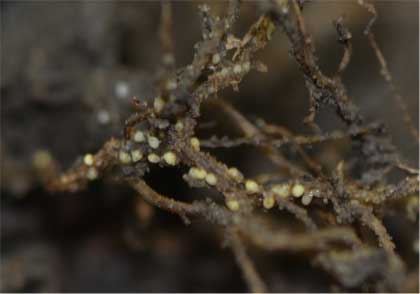November 10, 2018

Source: University of Illinois Extension
Soybean Cyst Nematode is an extremely important, yield limiting pathogen of soybeans in Illinois, reducing yields an average of 1-3% across the state.
As I have written in earlier posts, sampling your fields every 3-5 years to assess SCN levels and HG types is the first step in managing this issue. The best time to sample for SCN is after harvest in the Fall, and this can easily be added onto any samples you gather for soil nutrient testing. However, wet weather across portions of the state have made it difficult to sample many fields, and in some areas, it may not be possible to obtain samples before the ground freezes.
The nice thing about SCN is that it will survive the winter in your soil, and still be present prior to planting in the spring. Fall testing is more practical, and allows you more time to obtain results and make management decisions, but spring sampling still will provide you with valuable information on SCN levels in your fields.
The take home message here is that you can expect similar data from fall and spring samples, and that it is better to sample in the spring than not at all. For more information about how we are working with the United Soybean Board and other sponsors to help minimize losses due to this pest in IL click here. #TheSCNCoalition
Originally posted by the University of Illinois Extension.
You May Also Like




